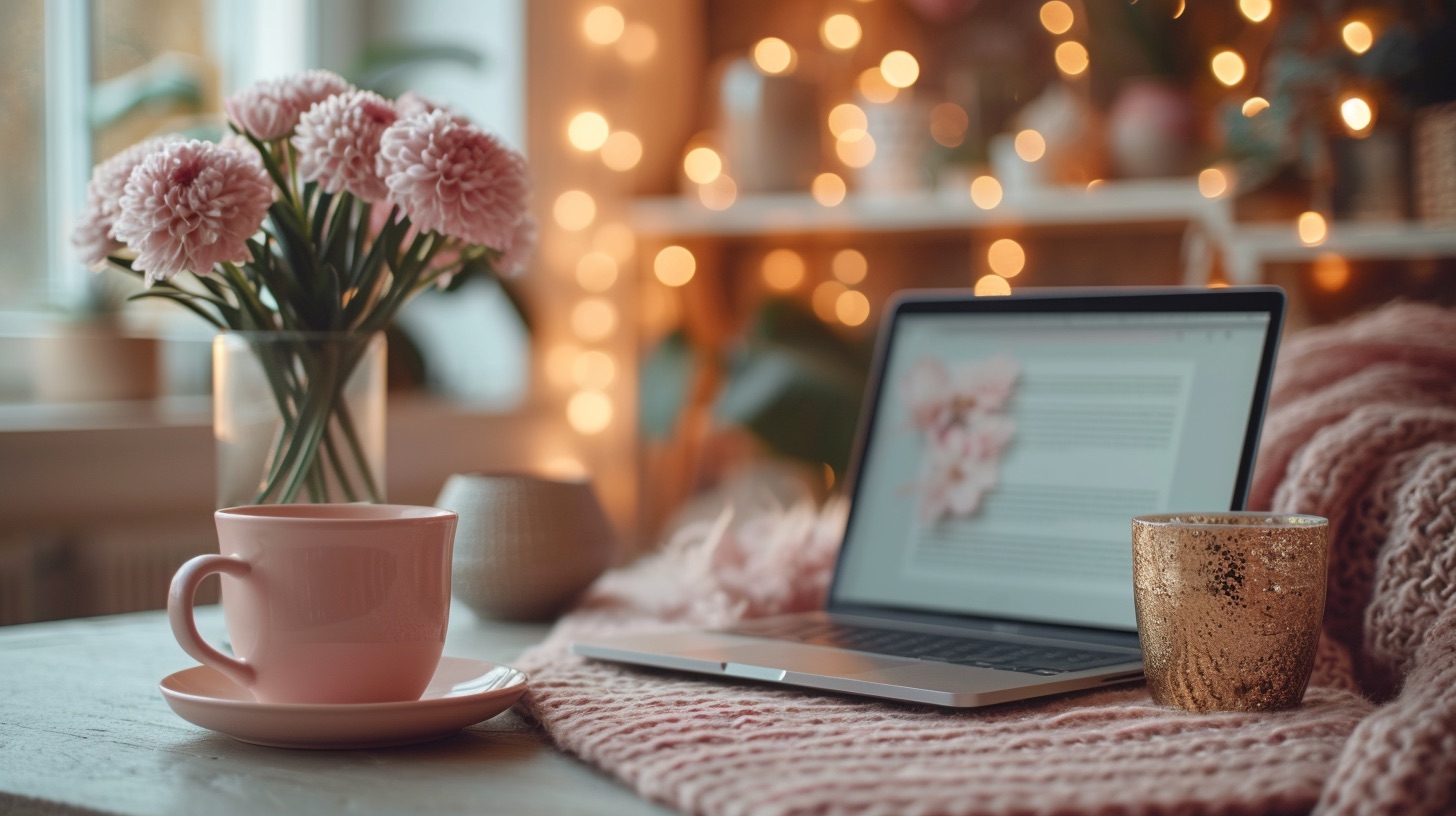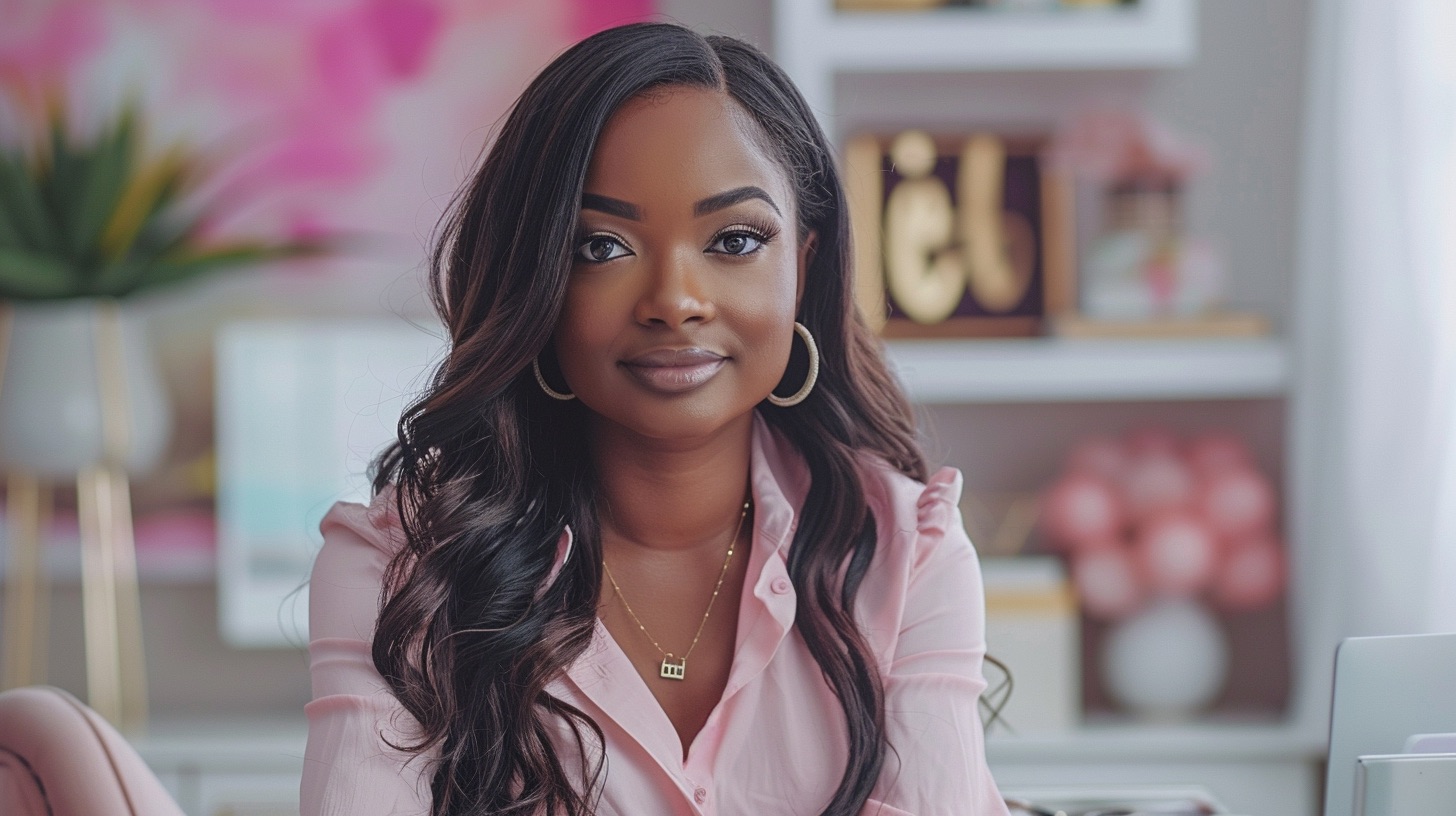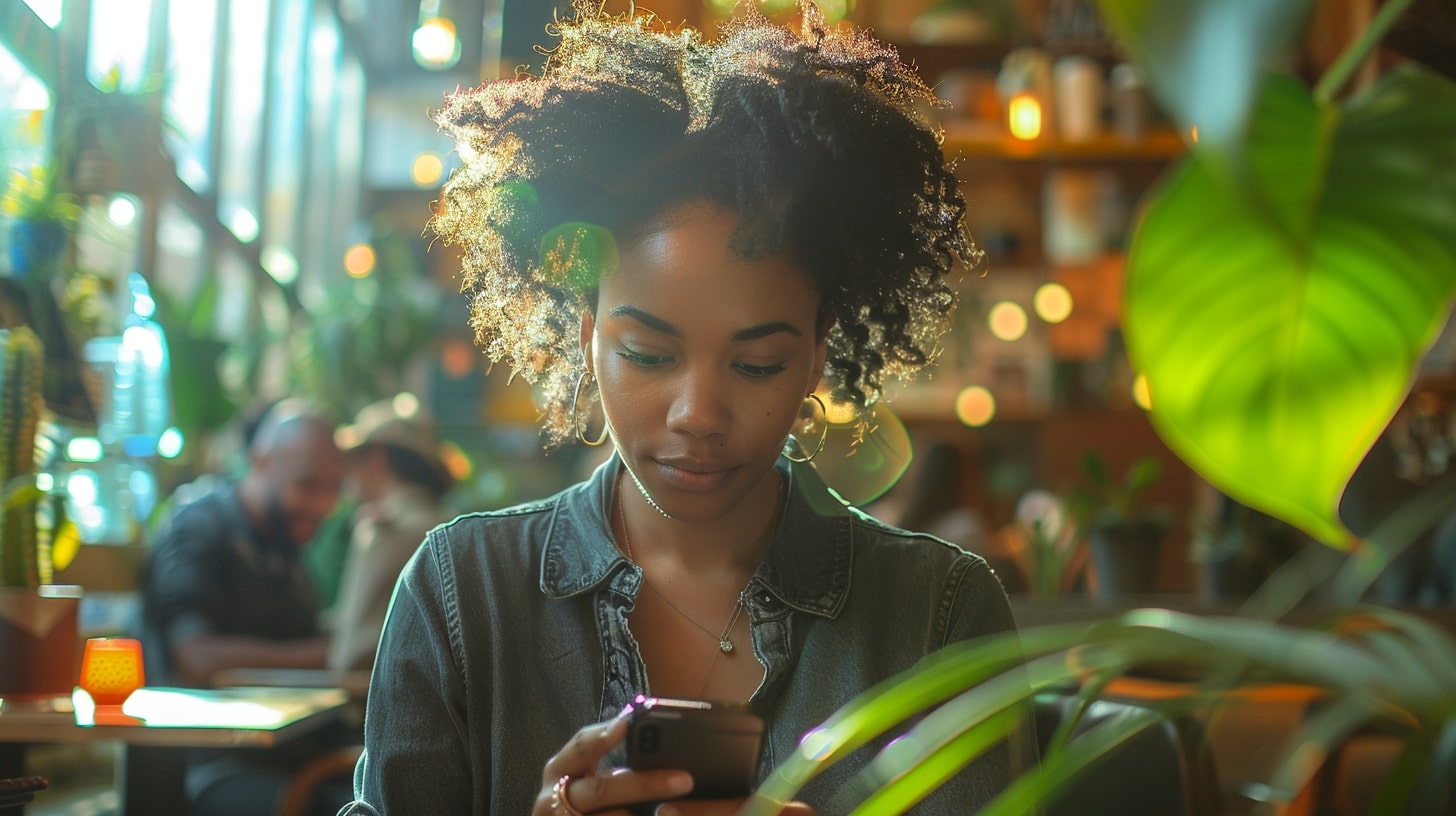The Importance of Blog Design
As an aspiring blogger, you might feel that creating compelling content is all you need to focus on. While that’s undoubtedly essential, the importance of blog design cannot be overstated. Think of your blog design as the virtual storefront for your ideas, insights, and experiences. It sets the tone for your reader’s experience and can make or break their decision to stay on your page or leave.
First Impressions Matter

Internet users form a first impression of a web page within 50 milliseconds. As such, your blog design plays a crucial role in capturing and maintaining the attention of your audience. A clean, visually appealing, and easy-to-navigate design can entice visitors to explore your content further. On the flip side, a cluttered, poorly structured, or unattractive design can lead to higher bounce rates. If you’re just starting a blog, investing time and effort into creating a unique and appealing design can set you on the path to success.
The Role of Design in User Experience
The design of your blog significantly influences the user experience. It dictates how easily visitors can navigate your site, find the information they’re looking for, and interact with your content. An intuitive and responsive design not only enhances user experience but also encourages visitors to spend more time on your blog, increasing the chances of them becoming regular readers or even subscribers. Whether you are running a travel blog, food blog, or fashion blog, a well-designed user interface can significantly improve your reader’s experience.
How Design Affects Your Brand and Credibility
Your blog design also serves as a reflection of your brand. It communicates your personality, style, and values to your audience. By establishing a consistent visual identity through your blog’s design elements – such as color scheme, typography, and imagery – you can create a strong brand image that resonates with your audience.
Moreover, a professional and well-maintained blog design can boost your credibility. It signals to your readers that you take your blog seriously and are committed to providing valuable content. This can help build trust with your audience, encouraging them to engage with your content and return to your blog in the future.
In conclusion, exceptional blog design is a powerful tool in capturing your audience’s attention, enhancing their user experience, and establishing your brand. As you embark on your blogging journey, remember that your design should evolve as your blog grows and develops. Stay updated with design trends, listen to your audience’s feedback, and don’t hesitate to experiment with different design elements to find what works best for your blog. For more tips and guidance on starting your blogging journey, check out our article on blogging for beginners.
Understanding the Elements of Blog Design
When it comes to creating an engaging and user-friendly blog, understanding the fundamental elements of blog design is essential. These elements include the layout and structure, typography and fonts, colors and images, and navigation and user interface of your blog.
Layout and Structure
The layout and structure of your blog form the foundation of your blog design. A well-structured layout makes it easy for visitors to navigate your blog, find the information they need, and engage with your content.
A clean, uncluttered layout is key to a user-friendly design. Make sure your posts are easy to read and that the important elements (like your blog’s title, navigation menu, and call-to-action buttons) are prominently displayed.
Remember, the goal of your layout should be to guide your visitors’ attention to the most important parts of your blog. For more information on creating a user-friendly layout, check out our article on blogging templates.
Typography and Fonts
Typography and fonts play a substantial role in the overall aesthetic of your blog design. They also impact readability, making them vital to a positive user experience.
Choose fonts that are easy to read and match your blog’s personality. For instance, if you’re starting a blog about finance, you might opt for a more professional-looking font. On the other hand, a travel blog might benefit from a more casual, handwritten-style font.
Colors and Images
Colors and images can significantly influence your blog’s mood, branding, and overall visual appeal. When choosing your color scheme, consider the emotions and responses that certain colors can elicit.
You can use a tool like Coolors to help find color palettes you love.
Images, whether they’re photographs, illustrations, or infographics, can also enhance your blog posts. They can break up large blocks of text, provide visual examples, and create a more engaging experience for your readers.
When selecting colors and images, it’s important to maintain consistency throughout your blog to create a cohesive and professional look.
Navigation and User Interface
The navigation and user interface of your blog significantly impact how easily visitors can explore your content. A clear, intuitive navigation menu can guide your visitors to the information they’re seeking, improving their overall experience.
Consider including a search bar for easy access to specific content. Make sure your contact information and social media links are easily visible. Furthermore, your blog should be mobile-friendly, ensuring a seamless experience for users on all devices.
In sum, the layout and structure, typography and fonts, colors and images, and navigation and user interface all contribute to an effective blog design. By understanding and implementing these elements, you’ll be well on your way to creating a blog that’s not only visually appealing but also user-friendly and engaging. For more tips on enhancing your blog design, check out our comprehensive guide on blogging for beginners.
The Power of Responsive Design
In the digital world, where a variety of devices are used to access content, having a responsive blog design is non-negotiable. This section delves into the concept of responsive design and its importance for blogs.
What is Responsive Design?
Responsive design refers to a website design technique that ensures the content and layout of a site automatically adjust to the screen size and orientation of the device it’s viewed on. In other words, whether a reader is visiting your blog from a desktop, laptop, tablet, or smartphone, the site will render in a way that is optimized for that particular device’s screen size.
This means that elements such as navigation menus, header and footer, text content, images, and videos reposition and resize themselves to offer the best possible viewing experience. Responsive design eliminates the need for separate designs or “mobile versions” of your website, providing a seamless user experience across all devices.
Why Responsive Design is Crucial for Blogs
In the context of blog design, responsive design plays an instrumental role. Here’s why:
-
Improved User Experience: A responsive blog ensures your audience can read and navigate your site easily, regardless of the device they’re using. This enhances the overall user experience, encouraging readers to stay longer and interact more with your content.
-
Increased Mobile Traffic: With the ubiquitous use of smartphones for internet access, a responsive blog is essential to cater to the significant number of users who will access your blog via their mobile devices.
-
Better SEO Rankings: Search engines, like Google, prioritize responsive blogs in their search results. This is because responsive design improves site usability, and consistently good user-experience is an important ranking factor.
-
Faster Website Load Times: Responsive blogs typically load faster on all devices, but particularly on smartphones and tablets. Faster load times contribute to a better user experience and can positively impact your site’s search engine rankings.
-
Lower Bounce Rates: If your blog is easy to navigate and read on all devices, visitors are more likely to stay longer, reducing your bounce rate. A lower bounce rate signals to search engines that your blog is a reliable and valuable resource, which can help boost your rankings.
-
Future Scalability: A responsive blog design ensures your site will look and function well on any future devices and screen sizes, protecting your site’s relevance and usability in the long run.
For aspiring bloggers, understanding the power of responsive design can significantly elevate their blogging game. It’s a vital part of how to start a blog and should be integrated right from the beginning when starting a blog for optimal results. Whether it’s a travel blog, a food blog, or a tech blog, responsive design is key to a blog’s success.
Designing for User Engagement
An essential aspect of blog design that often goes unnoticed is user engagement. A well-designed blog not only attracts visitors but also encourages them to interact with the content. This interaction can take many forms, from leaving comments to sharing posts on social media. Here’s how you can design your blog to encourage user engagement.
Encouraging Interactivity
Interactivity in a blog can significantly enhance the user experience. This can be achieved through various methods such as incorporating quizzes, polls, or interactive infographics. These elements can make your blog posts more engaging, encouraging users to spend more time on your blog.
Besides these, including a call to action (CTA) in your blog posts can also increase interactivity. A CTA prompts the reader to take a specific action, whether it’s subscribing to a newsletter, downloading an e-book, or viewing a related post on your blog. By effectively using CTAs, you can encourage your readers to interact with your content and possibly convert them into regular visitors or subscribers.
Implementing Social Sharing Buttons
In the age of social media, sharing blog content has never been easier. By incorporating social sharing buttons into your blog design, you can encourage your readers to share your content with their social media followers. These buttons should be visible but not intrusive, placed strategically in your blog posts to encourage sharing without disrupting the reading experience.
Remember that each social media platform has its own set of users with unique preferences. Therefore, it’s crucial to include sharing options for various platforms to cater to the different social media habits of your readers. For more insight into the role of social media in blogging, check out our article on blog marketing.
Incorporating Comment Sections and Community Features
Creating a sense of community can greatly enhance user engagement on your blog. One way to achieve this is by incorporating a comments section where readers can share their thoughts, opinions, or experiences related to your blog content. This not only encourages interaction among your readers but also provides you with valuable feedback which can be used to improve your future blog posts.
In addition to a comments section, you can also consider incorporating community features such as forums or discussion boards. These platforms can facilitate more in-depth discussions among your readers, fostering a sense of community around your blog. Remember, the more engaged your readers are, the more likely they are to return to your blog and share your content with others.
Incorporating these elements into your blog design can significantly enhance user engagement, making your blog more interactive and community-oriented. This, in turn, can lead to increased traffic, higher reader retention, and ultimately, a successful blog. For more tips on blog design and user engagement, check out our guide on blogging for beginners.
SEO and Blog Design
An often overlooked aspect of blog design is its impact on Search Engine Optimization (SEO). SEO is the process of making your blog more visible to search engines, which can result in higher traffic and more readers. Let’s delve into how blog design can affect your blog’s SEO and provide some tips for optimizing your design for search engines.
How Design Can Impact SEO
The structure and design of your blog can significantly influence its SEO. Search engines, like Google, use bots to crawl and index your blog. A well-designed blog can make it easier for these bots to understand and index your content, which can improve your search rankings.
One key factor is your blog’s navigation structure. A clear, intuitive navigation structure can help both readers and search engine bots find and understand your content. For example, a well-structured travel blog or food blog can guide visitors to relevant articles and recipes, improving the user experience and boosting SEO.
Similarly, the speed and responsiveness of your blog can also impact SEO. Search engines favor blogs that load quickly and function well on both desktop and mobile devices. A slow-loading fashion blog or lifestyle blog, for instance, can hurt your search rankings and discourage readers from returning.
Design Tips for SEO Optimization
When it comes to optimizing your blog design for SEO, there are several strategies you can implement:
1. Improve Site Speed: Optimizing images, reducing server response time, and leveraging caching can help your blog load faster. A quick-loading personal blog or book blog can enhance user experience and improve SEO.
2. Implement Responsive Design: A responsive design adapts to different screen sizes, providing a seamless experience for both desktop and mobile users. This is crucial for SEO, as search engines favor mobile-friendly blogs.
3. Organize Content with Headers: Using headers (H1, H2, H3, etc.) to organize your content helps search engines understand your blog’s content. This can aid in indexing and improve your blog’s visibility in search results.
4. Use SEO-Friendly URLs: URLs that include keywords and accurately describe the content of your page can boost SEO. For example, a URL like “www.yourblog.com/top-vegan-recipes” is better than “www.yourblog.com/post123”.
5. Incorporate Internal Links: Including internal links in your posts can help search engine bots discover new content on your blog and understand the relationship between different posts. For instance, a fitness blog might link to related workout routines or nutrition tips.
These are just a few ways that the design of your blog can impact SEO. By prioritizing both aesthetics and search engine optimization, you can create a blog that not only looks great but also performs well in search results. For more information on optimizing your blog for SEO, check out our article on blogging SEO.
Keeping Your Blog Design Fresh
Ensuring your blog design stays fresh and current is vital to attracting and maintaining your audience. Read on to learn how to keep your blog design up-to-date and engaging.
Regularly Updating Your Design
Bloggers often underestimate the power of a fresh and updated blog design. Regular updates can keep your blog exciting, show that you are active, and provide a better user experience. It’s advisable to review and refresh your blog design every 6 to 12 months.
These updates can be big or small, such as changing the color scheme, updating the header image, or even just tweaking the layout. It’s also an opportunity to ensure all your links are working, and your content is up-to-date.
Remember to ensure that your updates align with your brand and audience. For example, if you run a travel blog, you might update your design with new travel photos or add a new section on travel tips.
Following Design Trends
Keeping up with design trends can help keep your blog looking modern and engaging. Not all trends will be relevant or suitable for your blog, but being aware of them can provide inspiration and ideas for future updates.
Some trends to watch out for in the blogging world include minimalist design, bold typography, and the use of animations. Be careful not to fall into the trap of constantly chasing trends, though. Your blog should reflect your unique brand and voice.
Reading blogs about blogging, like our blogging for beginners series, can help you stay informed about the latest trends.
Listening to User Feedback
One of the best ways to improve your blog design is by listening to feedback from your readers. They are the ones using your blog, so their input is invaluable.
You can gather feedback through comments on your posts, social media interactions, or even formal surveys. Ask your readers what they like and don’t like about your blog design, and what they would like to see more of.
For example, if you have a fitness blog, and your readers express a desire for more workout videos, you might consider redesigning your blog to feature a workout video gallery.
Remember, the goal of your blog design should always be to provide the best possible experience for your readers. By regularly updating your design, staying informed about trends, and listening to user feedback, you can ensure your blog remains fresh, engaging, and enjoyable for your readers.




